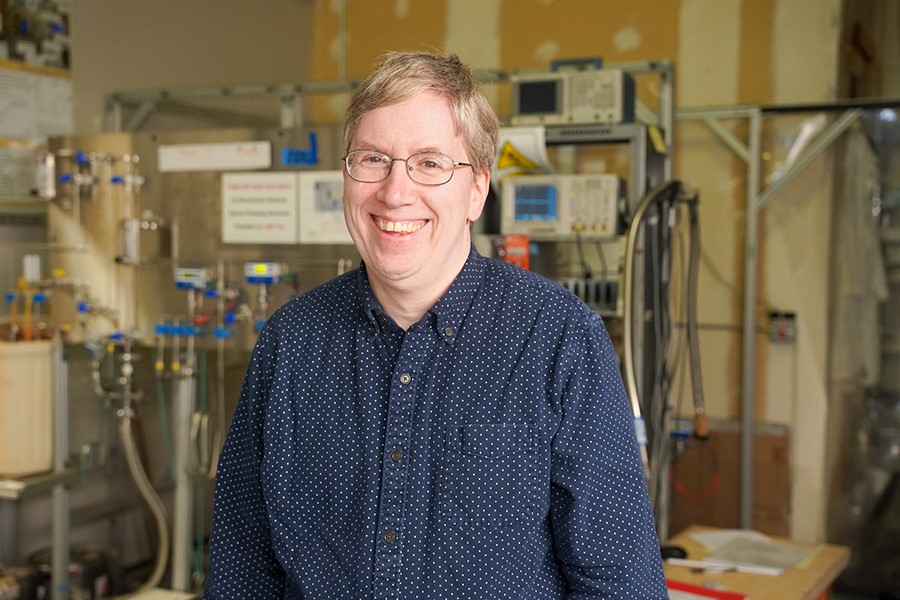Dr. Schnee Selected to Serve on National Particle Physics Panel

Cutline: Richard Schnee, Ph.D., head of the South Dakota Mines physics department, spent 2023 serving on a national particle physics panel which makes recommendations on what types of physics research nationwide should be funded.
Richard Schnee, Ph.D., head of the South Dakota Mines physics department, spent 2023 serving on a national particle physics panel which makes recommendations on what types of physics research nationwide should be funded.
Schnee was one of only two people on the 32-member panel – the Particle Physics Project Prioritization Panel, known as P5 – who are not employed in a national laboratory or at an R1 Carnegie classified higher education institution. Members of the panel are nominated and chosen by the panel’s chair and deputy chair. “Serving on P5 was an enormous amount of work, but was a great honor,” says Schnee.
Formed in 2002, the P5 convenes roughly once every eight years and spends an entire year discussing research and projects with a 20-year timeframe in mind. The P5 presented its 2023 recommendations on December 7 and 8 to the High Energy Physics Advisory Panel (HEPAP), which accepted the report and will subsequently advise the U.S. Department of Energy and the National Science Foundation. Each agency then chooses how to distribute its funding.
The Department of Energy gave the P5 two budget scenarios to consider, the more favorable of which takes into account inflation and the CHIPS and Science Act of 2022. The National Science Foundation did not give a budget. The P5 made sets of recommendations for each budget scenario and gave guidance as to what additional projects would be most worthwhile to add if funding exceeded the more favorable scenario.
This year’s recommendations include three major research areas that Mines faculty are involved in: the Deep Underground Neutrino Experiment (DUNE) at the Sanford Underground Research Facility (SURF) in Lead; Generation 3 dark matter detection, which could potentially be built as part of an expansion of SURF; and IceCube.
DUNE
The report recommends continued funding for the construction of two neutrino detectors in DUNE, additional funding for a third, and plans to increase the number of neutrinos in the beam which travels from Fermilab in the Chicago area to DUNE. Ultimately, scientists hope to learn more about neutrino oscillation – how a neutrino can change itself to be any one of three types. Mines faculty participating in this project are Juergen Reichenbacher, Ph.D., David Martinez Caicedo, Ph.D., and Jingbo Wang, Ph.D.
Generation 3 Dark Matter Detection
The largest dark matter detection experiments use liquid argon, such as Italy’s DarkSide-20k, or liquid xenon, like LUX-ZEPLIN that operates at SURF (read more here). The report recommends funding the next generation of dark matter detection experiments. Mines faculty participating on LUX-ZEPLIN are Reichenbacher and Schnee.
IceCube
IceCube, located at the geographic South Pole, detects neutrino activity through 5,000 sensors that run a cubic kilometer into the ice (read more here). The report recommends funding for expansion of the detection area in the ice, as well as adding a ground detection array and a radio antenna detection array. Mines faculty participating in this project are Xinhua Bai, Ph.D., and Matthias Plum, Ph.D.
“I’m excited by the particle physics experiments of the next decades,” says Schnee, “and the large roles that our faculty at Mines will be playing in them.”
MEDIA CONTACTS
Gray Hughes
Social Media and Content Producer
Marketing and Communications
Gray.Hughes@sdsmt.edu
605-394-2554
 National Science Foundation RII Track-1 Project:Expanding Research, Education and Innovation in South Dakota
National Science Foundation RII Track-1 Project:Expanding Research, Education and Innovation in South Dakota